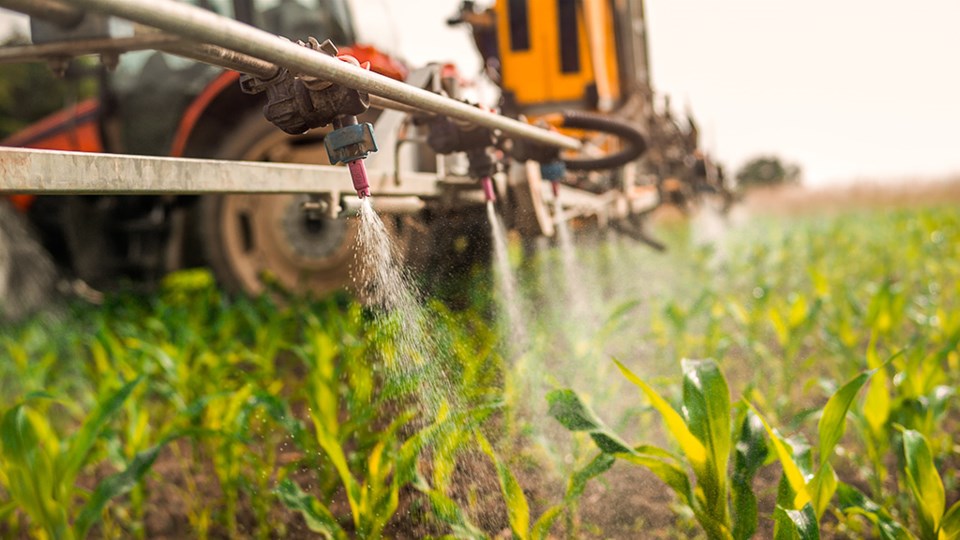SOUTHEASTERN CROP REGION — A week of warm days and no rain on the forecast has allowed for many fields in the Southeastern Crop Region to dry out and producers were able to make great progress with seeding, 86 per cent of the crop has now been seeded up from 64 per cent last week but still behind the five-year average (2017-2021) of 99 per cent. Many producers hope to seed low laying areas as they dry up before the seeding window closes for the season. It is reported that if the weather remains warm and dry, it will only take another seven to 10 days to complete seeding.
No rain was reported this week for the southeast region, this is highly appreciated by producers who still have many acres left to seed. Previous rainy weeks has left the region in a very good condition for plant growth with most crop, hay and pasture land having adequate moisture levels. Cropland is rated as 12 per cent surplus, 81 per cent adequate, six per cent short and one per cent very short. Hay and pasture land topsoil moisture is rated as three per cent surplus, 88 per cent adequate, seven per cent short and one per cent very short. Pastures in the region look very good and producers are expecting minimal issues if precipitation continues into the summer months.
Thirty-six per cent of the fall cereal crops are in the jointing stage and four per cent are in the shotblade stage, while eight per cent of the spring cereals are tillering. Thirty-seven per cent of canola and mustard is emerging and five per cent is in the seedling stage, along with eleven per cent of flax in the seedling stage. Fifty-one per cent of the pulse crops are emerging and 19 per cent is in the vegetative stage.
The majority of crop damage this week was due to strong winds, flea beetles, grasshoppers and frost. Producers are busy with in-crop spraying of pest control products to keep weed and insect pressures low.
Provincial Overview
Over the past week, producers across the Saskatchewan grain belt took advantage of dry weather that allowed for substantial progress with their seeding operations.
Ninety-one per cent of the 2022 crop has been seeded to date across all regions of the province, up from 76 per cent last week and just behind the five-year average (2017-21) of 97 per cent.
While seeding is being reported as 91 per cent complete across the province, it is important to note that there are many acres in east Saskatchewan that may not be seeded this year due to excess moisture and standing water. Some fields in the southwest and west central are being reseeded due to poor emergence and heavy insect damage.
The southwest and west-central are virtually complete with 99 per cent of their crop now seeded, 97 per cent in the northwest, 92 per cent in the northeast, 86 per cent in the southeast and 77 per cent in the east-central.
It was a relatively dry week for most of the province, however the southwest finally received some rain showers that were greatly appreciated and will hopefully improve their crop and pasture conditions. The Consul area received the most rain with 58 mm, the Maple Creek area 20 mm and the Shaunavon and Admiral areas 16 mm. More rain is desperately needed in the west-central and southwest regions. Producers in these regions are becoming anxious about how much longer their crops can survive without moisture. Dry weather allowed for many fields in the east to dry out enough to allow seeding and producers are hopeful that weather will continue to be favourable enough for them to go back out and seed low areas before the seeding window closes.
Cropland topsoil moisture is rated as six per cent surplus, 56 per cent adequate, 24 per cent short and 14 per cent very short. Hay and pasture land topsoil moisture is rated as three per cent surplus, 57 per cent adequate, 27 per cent short and 13 per cent very short. Dry conditions in the west are severely deteriorating crops in those regions and moisture is needed soon for both crop and pasture land.
Forty-five per cent of the fall cereal crops are reported as being in the jointing stage and 19 per cent are in the short blade stage, while 49 per cent of the spring cereals are emerging and 20 per cent are tillering. Thirty-eight per cent of the canola is emerging and 15 per cent is in the seedling stage, along with nine per cent of flax being in the seedling stage. Forty-nine per cent of pulse crops are emerging and 29 per cent are in the vegetative stage.
The majority of crop damage this week was due to strong winds, frost, drought, insects (including flea beetles, grasshoppers and cutworms); some farmers are reseeding due to flea beetle and cutworm damage.
Farmers have been busy spraying for weed and insect control, picking rocks, rolling lentil and moving cattle to pasture.





